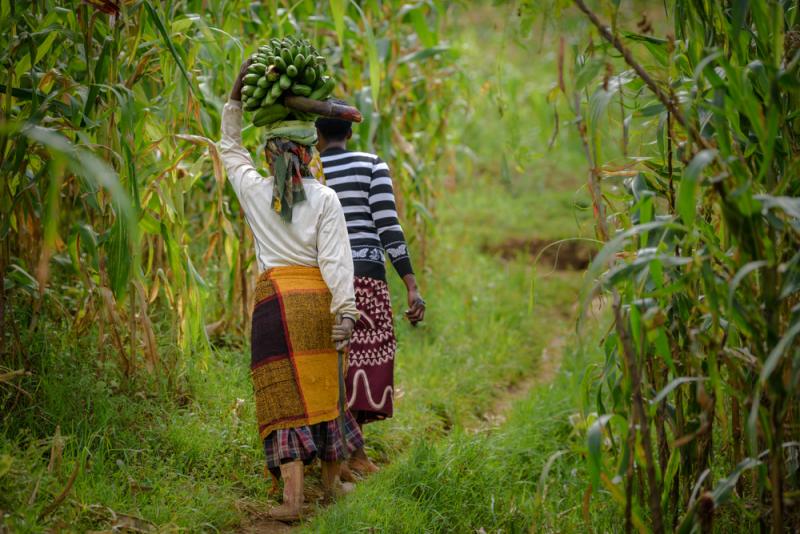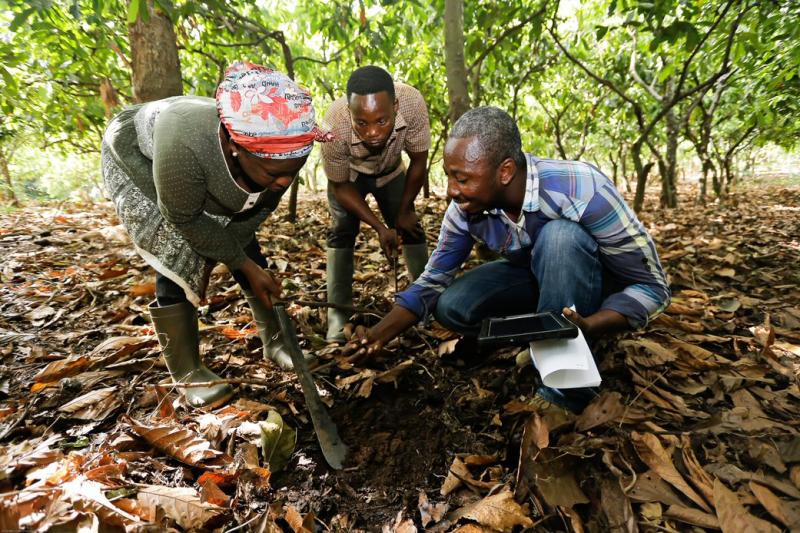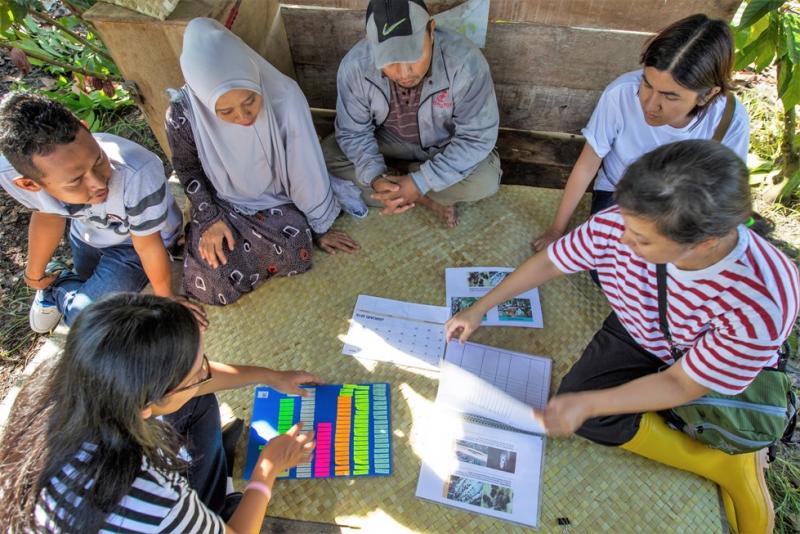Rainforest Alliance’s Daan de Vries outlines how fourth-generation technologies are being harnessed across Africa, Asia and Latin America, and to make food production more sustainable and avoid deforestation
We’re experiencing a digital and technology revolution with advancements in mobile payment systems, machine learning, the introduction of nano-satellites and other ground-breaking innovations transforming a whole range of industries. This revolution is built on the mastery and exchange of data, alongside breakthroughs in fourth-generation IT design and implementation. However, the data must be reliable and secure so that users come to trust these new solutions.
Businesses are experiencing the advantages provided by the availability of digital data, making data-driven decisions the norm. But how can we bring these digitisation advantages to producers of cocoa, coffee, tea, bananas and other crops? There is a great variety of data-collection tools, also for offline use in remote areas: from mobile apps, digital farm and farmer group management systems, to drones, radar and satellite imagery.
Digital data helps drive greater transparency and sustainability in food supply chains and can also help prevent deforestation. For this to happen, however, it’s paramount that all actors, including sustainability standards, collaborate to scale up digitisation in the field and increase its positive impact for farmers and forest communities. By combining and analysing the data, we can derive actionable insights.

There is such potential ahead in harnessing the power of data but progress on sustainability depends on collecting accurate information. In the past, certification data was used to measure compliance but there has often been a lack of accurate data, and data was frequently captured on paper or in inaccessible files. As we look to reimagine certification there is a much greater focus on gathering, sharing and using data to gain valuable insights that can drive improvements along the supply chain.
In the future, farms will be required to provide “polygons”, GPS markers that show the exact location and area of the farm. The new certification programme we’re developing will also make use of open data and geo-spatial analysis. For example, tapping into open databases with reliable information on the locations of water bodies and protected areas, and using satellite data on tree cover and tree cover loss.
A huge array of possibilities will be opened up by combining farm polygons with open data and geospatial analysis. With further advances in machine learning, satellite data will allow us to assess soil conditions more easily, better identify crop stresses and diseases and estimate the yield or potential yield of a farm.
In just one click I now access a dashboard, which displays all the data I need, for instance, to check conformity with sustainability standards
Farm polygons can be laid over historical and recent satellite images of forests and other protected areas to see where deforestation has taken place. Without this technology, in many cases, especially in remote areas, it is very challenging to know for sure where and when deforestation has happened.
So how can we make data work for farmers and help tackle critical issues such as deforestation, climate change, and support sustainable livelihoods?
Within its innovation projects, the Rainforest Alliance enables farmer groups to collect digital data so that they can identify where improvements are needed across a range of criteria. Performance data from the ground is made available on a dashboard and farmer group managers can analyse and take action based on this information.

Take, for example, the NECAAYO cocoa co-operative in Cote d’Ivoire. According to the co-operative manager, Jean Marc Gouda, using the digital system considerably reduced his workload and made his daily tasks less cumbersome. “In just one click I now access a dashboard, which displays all the data I need and creates statistics and analyses that allow me, for instance, to check conformity with sustainability standards,” says Jean Marc Gouda.
Further advanced analysis of data from within farmer groups, combined with other third-party data sources, can also benefit farmers, auditors, and companies.
For instance, the Rainforest Alliance has been analysing digital data from partners in the field, with pilot projects in the UTZ cocoa and hazelnuts programmes. We can see if a farm in a co-operative is too close to the border of a national park, or if crop planting is coming close to water bodies. That information can then be used to give more targeted advice or training on the ground, giving the farmer group a chance to improve on sustainability issues, and it can be used to make audits more effective.
Data collection and analysis can help to identify and understand the bigger issues behind unsustainable practices
Precision-farming using soil sensors, automated irrigation, or aerial surveillance is a booming business. However, a lot of it is tailored to larger-scale agriculture in developed countries. In middle- and lower-income countries, and in particular among smallholder farmers, another technology mix is needed.
Data collection and analysis can help to identify and understand the bigger issues behind unsustainable practices, develop more targeted and tailored farm development plans on how to address them and then monitor and measure progress and impact. For farmers to collect data, it is imperative that they see the benefits.
Together with Grameen Foundation, Mars, Inc and other partners, we have recently launched the SAT4Farming programme, an initiative to reach thousands of small-scale cocoa producers with information and services to improve their productivity and sustainability. It is designed to use digital technology and satellite imagery to create individual Farm Development Plans (FDPs), which will guide Ghanaian cocoa farmers over a seven-year period.
In the recent Ag-Tech Challenge that we organised, we identified two new partners to work with to further improve the Farm Development Plan: CropIn and 20tree.ai. We are excited to start working with them.

Harnessing the power of data will dramatically improve accuracy and efficiency in assurance, making it easier to check whether farms meet the Rainforest Alliance standards. For example, auditors can use drones or satellite images to check data like farm boundaries, protection of water sources and surrounding forests, and the use of shade trees. This is far quicker and more efficient than requiring auditors to check these visually, which could require walking around very large farms or many smaller farms. Making site checks faster also has the potential to reduce the burden on farmers.
Combining data from many farms in a region can provide benchmarks of productivity, or benchmarks on things like use of water, fertilisers, shade trees and other farming practices. This kind of information can help farmers to see how their farm is doing compared to others, learn from best practices, and plan ahead and make better decisions for their business.
Furthermore, technology can be effectively used for training and raising awareness among producers. Early last year the Rainforest Alliance launched its Farmer Training App, allowing farmers across Africa, Asia and Latin America access to training modules and videos, and to connect with other farmers to share best practices. In India, we partnered with SmartFarming on an app for coffee farmers to improve their agricultural practices.
Blockchain is making its mark on food supply chains, with many start-ups and consortia working on a variety of uses and food ingredients
However, accessing data from supply chains in some sectors remains difficult, as many products are grown in countries with data-poor systems. Meanwhile, blockchain is making its mark on food supply chains, with many start-ups and consortia working on a variety of uses and food ingredients. Recent interesting examples are Accenture’s Circular Supply Chain initiative, which enables consumers to give tips to overseas farmers, and a project by Dutch supermarket chain Albert Heijn to bring transparency in its orange juice supply chain.
Finally, with increased use of data, privacy remains a challenge. It’s without question that all data management must respect the personal details of individuals, the confidentiality of commercial data, and data security laws and best practices.
These are big challenges ahead, but by working together to address these issues the future of farming can be transformed for the greater good.

Daan de Vries is Rainforest Alliance’s chief innovation and technology officer.


